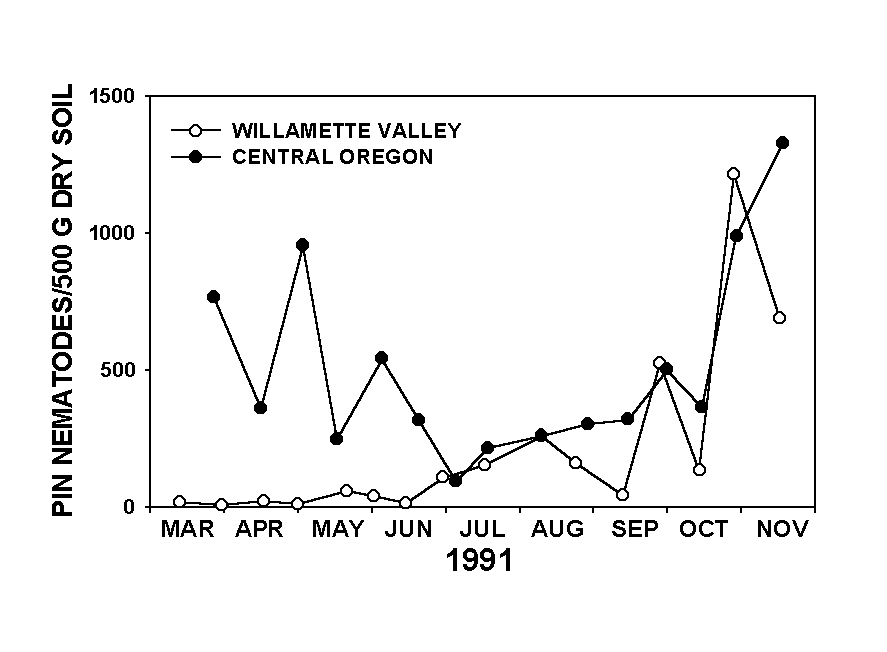CONTENTS
[Return to
Post-plant Options]
[Return to
Preplant Options]
[Return to
Nematode Management]
[Return to Nematode
Sampling]
[Table of Contents]
[Home]
|
|
 |
| Seasonal population cycles of pin
nematodes from Central Oregon and the Willamette Valley. Data were collected by taking
cores to 4-6 in, weighing the core and determining the number of nematodes which resided
in 500 g of that soil. |
Very few studies have
been conducted on control of pin nematodes but there are some limited data from studies
designed for other nematodes which contained pin nematodes in the samples as well. Spring
applications of Vydate 2L in Central Oregon significantly reduced populations of pin
nematodes. However, while both mid- and late April applications (1/2 GPA) significantly
reduced densities, there was a trend for mid-April treatments to be more effective,
reducing populations to 37 and 28% of those in nontreated plots sampled in late May and
early August, respectively (Ingham 1987, Ingham et al, 1988). Yields were not determined,
however. In the Willamette Valley, pin nematode populations at harvest (July 27) were
least in plots treated in mid- April than before or after that time. Early plus late April
split applications (1 GPA each) reduced populations over 95% but were not more effective
than a single application (1 GPA) on either date. Single applications at 1 or 2 GPA were
also equal (Ingham, 1990).
Weight of fresh hay following a fall application of Vydate
at 1/2 GPA in the Willamette Valley was 26% higher than in nontreated, plots but this
difference was not statistically significant. Spring applications at 1 GPA had no effect
on yield (Ingham unpubl.).
In contrast to most other nematodes which attack mint, pin
nematode populations are much higher in the fall than in the spring (see Figure above) and
therefore may be responsible for more winter injury in fields with high populations. Thus,
a fall application may provide better yield response than a spring application when pin
nematodes are the major nematode pest in that field. Fields with pin and root-lesion
nematodes may benefit from a fall-spring split application but no trials of this nature
have been conducted Considerable work remains to be done to optimize management of pin
nematodes in mint. |

